How to apply bronzer make-up, a vast topic… often misused and misunderstood, including by myself! Difficult when there is no user manual, don’t you think?
Even if I’m using an anti-UV protection on a daily basis, I like to have a healthy glow.
As bronzer make-up is a topic that fascinates me, and I have a lot of things to tell you, I’ll be splitting this post into 2 parts: the first part will be devoted to technique and the second one will be all about the products.
So what exactly is a bronzer?
A bronzing powder or bronzer is a powder that can artificially recreate the natural tan that we can get from the sun.
There are a lot of different bronzers and it is one of the best-selling make-up products in the world, because everyone is looking for the famous healthy glow, especially those of us with the fairest skins.
The bronzer is often misapplied. If I had to count the number of times I’ve seen girls put it all over the face, with an ultra-dark and/or ultra-orange colour…
For the record, I also used to make this mistake (However, I did not go as far as the infamous Snooki !).
For years, I thought that bronzer had to be used during the summer to enhance the existing tan on your face.
And then I ended up completely giving up on it, because it never worked the way I wanted: too iridescent, too dark, too orange… basically, it just couldn’t get it to work for me!
But now I’m living in a very sunny country with lots of tanned girls everywhere, I decided to try it again, but this time I chose colours and finishes with specific properties. And it is true that, when well balanced and well applied, it really brings back life to your complexion, especially in winter when my skin has a ‘lovely’ natural pale grey tone.
Precisely. So, can the bronzer be used all year round?
Absolutely!
The only rule (or guide) is to choose its colour and finish to match the current season, and especially with its light. And of course, the colour has to match your skin tone!
– Winter: lighter colours, why not with a little bit of pink in it, but with a rather mat finish because the light (from the sun and artificial) has a lot of blue in it, so warm and shiny colours tend to stand out too much, especially on fair skins.
– Spring: bronzers with a mix of different colours are your best friends for the first rays of sun. The light changes and becomes progressively more yellow, however it is still quite pale. So your complexion needs to be warmed but nice and smoothly. You will enjoy a mix of colours and textures that will provide a very natural and radiant healthy glow.
– Summer: the sun is here, the skin is a little more tanned and golden, so we can go with a little darker colour and a beautiful iridescent finish that will sparkle in the sunlight.
– Autumn: generally, depending on my tan, I use one or the other previous products, but these are often like spring.
So is bronzer like a blush?
It is true that the two products are meant to provide radiance to the skin.
However, the blush will provide a “blushing” effect to the face as if you’d gone for a walk in the fresh air, a very fresh effect.
Blush colours are rather different from those of bronzer; the shades of blushes often have a dominance of red (or pink for lighter colours) to recreate this famous “flushed” effect.
On the other hand, you place your blush on the high cheekbones, because it is often in this area that you blush (or flush) naturally.
For the bronzer, it will be applied on parts of the face where the sun “hits” naturally. But I’ll cover this topic in the guide below.
Can I use my bronzer as a blush?
Depending on the colour of the bronzer, yes of course you can! If you have a bronzer which is not too brown, nor too beige, it can be very nice and subtle. Many bronzer shades are available with a mix of several colours (often including pink) which are supposed to be mixed together; these tints can create a very pretty blush.
But, personally, I find that a more classical bronzer with a golden tone is a bit too dull for a good blush. It is always better to add a pop of colour to refresh the skin.
Can a bronzer be used for contouring?
So, contouring, what is it exactly ?
The contouring gives more dimension to the face accentuating the shadows and lightening other areas of the face. It is mainly a technique that is used before a shoot or a movie.
And so why suddenly are more and more people interested in this technique? Because Instagram, #selfie, and well Youtube of course!
Personally, I think it’s a little bit too much for everyday make-up, and strange on your skin with natural daylight. In any case, it is not very subtle. Unless your model of natural beauty is Kim Kardashian, but I do not recommend this technique on a daily basis.
Logically, for successful contouring, you also need two products: a matte dark shade to deepen and recreate shadows on the face and a luminous light shade to highlight the areas of natural light on the face.
And so, can bronzer be used as a contouring product?
Well, more or less. If it is a very dark shade, very matte, without a hint of red (so, not orange), you can use it as a contouring product, yes.
For my part, I have a naturally lined face, so the contouring , I avoid it altogether. I prefer to use illuminating make-up to create some volume and hopefully seem less tired as a result.
How to choose the correct bronzer colour?
Essential question!
My advice?
Avoid orange at all costs! Unless you really want to look like a carrot , of course. But hey, ‘to each her own’, remember though you were warned!
Personally, I much prefer a nice golden beige, not too dark, because it is my natural colour when I tan if I want to add freshness, I mix with a little pink, that is always welcome.
Typically, you rely on your natural colour when you’re tanned , it will avoid you making mistakes. And also, especially on a really fair/pale skin, remember that too much contrast with a product that is too dark is generally not very pretty. it needs to be quite subtle and natural.
The ideal?
Aim at basing on the colour of your body, which is often slightly darker than the colour of your face.
Which finish to choose?
Bronzers are quite varied in terms of finishes, it goes from matte to very glittery.
– A matte finish gives a more natural effect, and goes very well in a winter or artificial light. If you choose a colour that is not too dark, the result is very natural and it will warm up your complexion.
– An iridescent or satin finish is brighter, and will better reflect natural light. This finish is my favourite, this is so easy to apply and is easily build-able, so no risk of applying too much product.
– A glittery finish: I’m not a fan of this one, because it is not really natural to me. OK to illuminate the face, but with the glitters, the main risk is you end up looking like a disco-ball.
What brush to use for the application of the bronzer?
I like to use a MAC 187 brush or the Real Techniques Multi Task brush (which comes in a kit with other brushes that all are very good) .
These 2 are soft and medium-size brushes, not too dense providing a more diffuse and also a more natural result.
I personally do not like the Kabuki brushes that I find too dense. They apply too much product and it is pretty difficult to blend correctly with them.
Where to apply the bronzer on the face?
To apply the bronzer, I use the technique of 3 or E. It means that the product will be placed on the curved parts of the face (where the sun naturally tans the face) and it comes as a kind of “3” or “E”.
So basically, I apply the bronzer starting at the hair roots (on the outside edges), and onto the temples past the middle of the cheeks (from outside to inside), then down to the jaw bone, and on the sides of the neck.
Obviously, it’s better to do this with a very light hand and blend together the products to avoid seeing any dividing lines, because the goal of the bronzer is to warm up your overall complexion and not to look hot and fiery with a war paints look.
I recommend for a more natural effect to also put a little bit of product on the nose, the ears and also on the front of the neck.
Super important, the neck! Otherwise, you’ll see too much of a difference compared to your face.
For the application technique, it is not rocket science, I proceed in circular motions with my brush so that the product blends in nicely, and avoid being heavy handed when you apply it. Slowly add more until you obtain the desired effect.
At what point of my make-up routine should I apply the bronzer?
It is best to apply it after having applied the setting powder on the skin.
Whether there is foundation or not, the powder will really improve the application of the bronzer, providing a perfect base that will limit the adhesion and especially avoid creating patches with your bronzer.
In summary, the mistakes to avoid:
– Too dark colour compared to the natural skin colour and too orange (nobody tans naturally orange, except for giant carrots) (yes, they exist! And this, doesn’t it remind you of a giant carrot ?)
– A very glittery finish. The “Disco Ball” effect, thanks, but no thanks.
– An application all over the face like a powder/foundation, not natural at all
– Forget to put some on the neck
– Applying it directly on the face after moisturiser and/or foundation, guaranteed to result in patches
I hope this article has given you some keys to using a bronzer; please don’t hesitate to give me your own tips if you have some in the comments section below!
Photo credits: Snooki, Kim Kardashian , MAC, Real Techniques, Fotolia
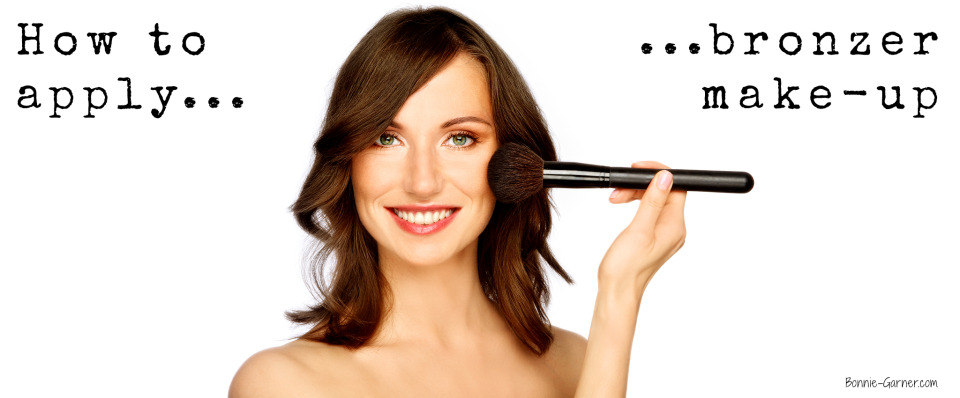





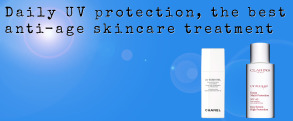
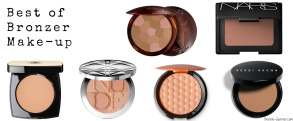
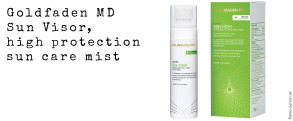
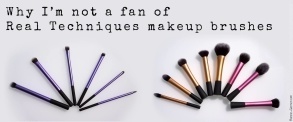


Leave a Reply